The Historical Battle Of Zapote Bridge
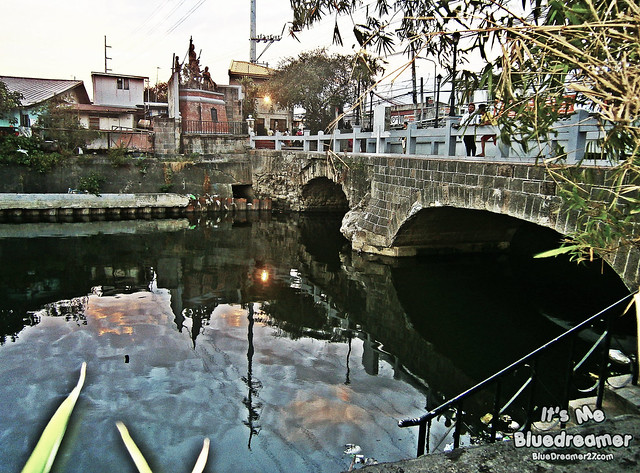 Located next to Aguinaldo Highway lies a 199 year old bridge that has a huge historical significance not just in Zapote and Las Piñas alone but for the entire country. Zapote Bridge was built in 1817 under the leadership of Don Agustin Dela Cruz through the initiative of Padre Diego Cera of the Augustinian Order. Interestingly, this bridge has witnessed not just one but two major historical events in the Philippines.
Located next to Aguinaldo Highway lies a 199 year old bridge that has a huge historical significance not just in Zapote and Las Piñas alone but for the entire country. Zapote Bridge was built in 1817 under the leadership of Don Agustin Dela Cruz through the initiative of Padre Diego Cera of the Augustinian Order. Interestingly, this bridge has witnessed not just one but two major historical events in the Philippines. Topographically, Zapote Bridge connects towns of Bacoor and Imus to the south and Las Piñas and Manila to the north. Half of the bridge was destroyed during the battles but the other half remains intact. Thanks to the local government of Las Piñas who funded the bridge’s restoration. Today, the bridge serves as a pedestrian promenade, connecting Barangay Zapote, Las Piñas to Barangay Zapote in Bacoor, Cavite.
Topographically, Zapote Bridge connects towns of Bacoor and Imus to the south and Las Piñas and Manila to the north. Half of the bridge was destroyed during the battles but the other half remains intact. Thanks to the local government of Las Piñas who funded the bridge’s restoration. Today, the bridge serves as a pedestrian promenade, connecting Barangay Zapote, Las Piñas to Barangay Zapote in Bacoor, Cavite.
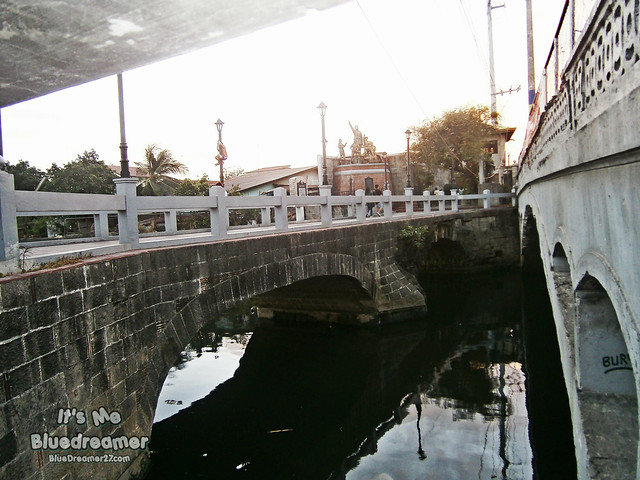 Appearance wise, the historical Zapote Bridge has nothing much to offer. Some of you might even say that it is just a freaking small bridge but as soon as you learn the history behind this infrastructure, you’ll know that this site is absolutely worth visiting.
Appearance wise, the historical Zapote Bridge has nothing much to offer. Some of you might even say that it is just a freaking small bridge but as soon as you learn the history behind this infrastructure, you’ll know that this site is absolutely worth visiting. 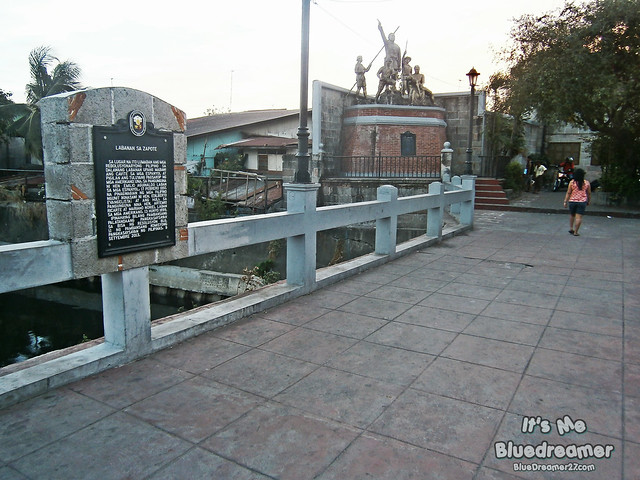 Like I said, the bridge has witnessed two major historical events. First is the Philippine Revolution against Spain in 1897 and the other one is the Philippine–American War in 1899 which is considered as the second largest Philippine American battle after the Battle of Manila five months before in February 1899.
Like I said, the bridge has witnessed two major historical events. First is the Philippine Revolution against Spain in 1897 and the other one is the Philippine–American War in 1899 which is considered as the second largest Philippine American battle after the Battle of Manila five months before in February 1899.
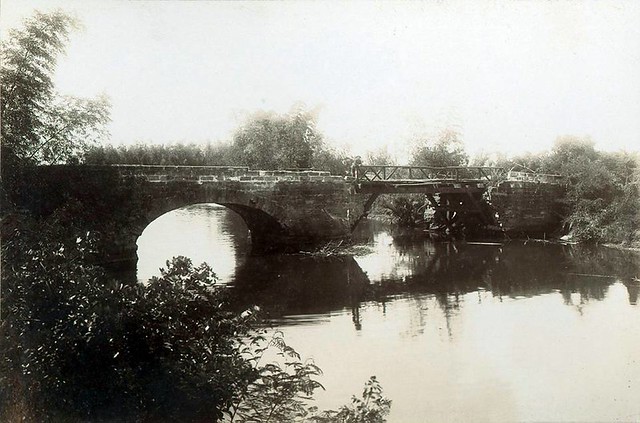
Zapote Bridge became the battlefield for two decisive battles. The Filipino Revolutionary forces led by General Edilberto Evangelista fought against the Spanish troops which took place in February 17, 1987. Evangelista, however, was killed in the battle. Two years later, another war occurred on the same site and this time it is between 1,200 Americans and between 4,000~5,000 Filipinos.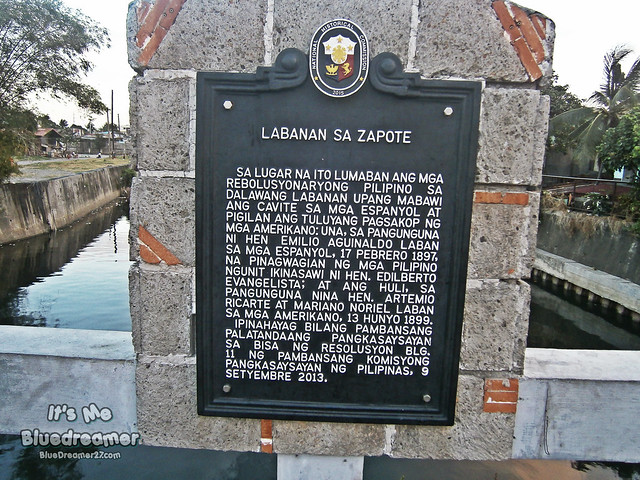 (A historical marker attached to the bridge). Despite of being outnumbered by Filipinos, Americans still won the war but sides suffered heavily where in the American suffered 75 casualties with 15 killed, and the Filipinos suffered 150 deaths and 375 wounded.
(A historical marker attached to the bridge). Despite of being outnumbered by Filipinos, Americans still won the war but sides suffered heavily where in the American suffered 75 casualties with 15 killed, and the Filipinos suffered 150 deaths and 375 wounded.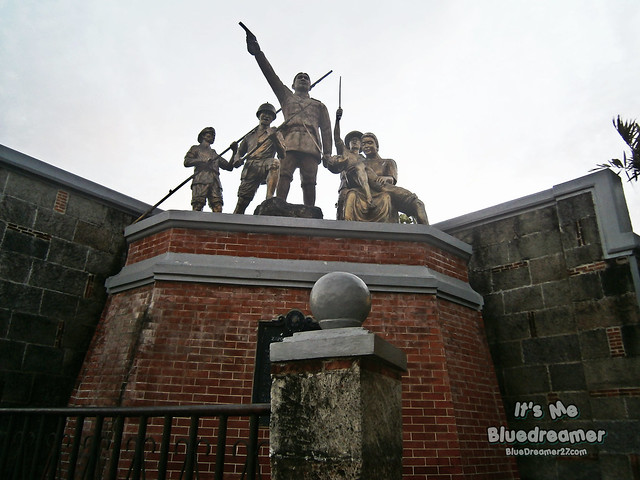 To pay tribute with this historical battle, monument parks were established on both ends of the bridge. What makes it more interesting is that these sculptures were made by the late Eduardo Castrillo who recently passed away due to cancer. Ed Castrillo is the genius behind some of the iconic sculptures in the country include the People Power Monument in EDSA.
To pay tribute with this historical battle, monument parks were established on both ends of the bridge. What makes it more interesting is that these sculptures were made by the late Eduardo Castrillo who recently passed away due to cancer. Ed Castrillo is the genius behind some of the iconic sculptures in the country include the People Power Monument in EDSA.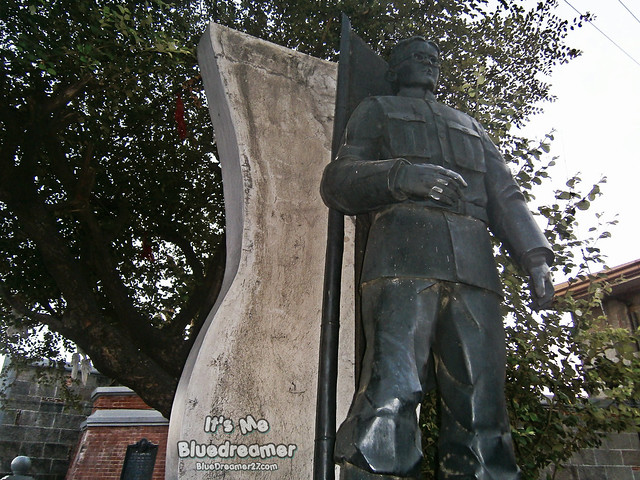 Located next to the Zapote Battlefield Monument is another sculpture paying tribute to General Edilberto Evangelista who made huge contributions during the Philippine Revolution.
Located next to the Zapote Battlefield Monument is another sculpture paying tribute to General Edilberto Evangelista who made huge contributions during the Philippine Revolution.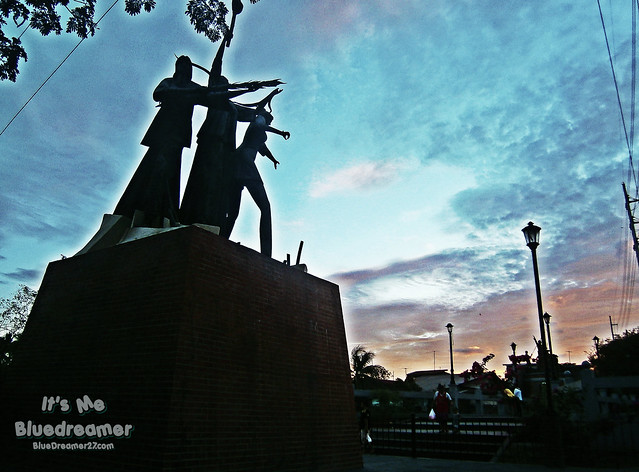 Located on the other end of the bridge is another monument depicting three women holding different items like torch and leaves which is probably a symbolical representation. Much like the Zapote Battlefield monument, this one is also a masterpiece by Ed Castrillo.
Located on the other end of the bridge is another monument depicting three women holding different items like torch and leaves which is probably a symbolical representation. Much like the Zapote Battlefield monument, this one is also a masterpiece by Ed Castrillo. These women are like Charlie’s Angels of the Zapote Bridge battle.. haha just kidding.
These women are like Charlie’s Angels of the Zapote Bridge battle.. haha just kidding.


I enjoyed the history lesson. I didn’t know about those wars, I definitely need to brush up on history. The structures are amazing and beautiful.
Ha! They do look like Charlie’s Angels. I had no idea that this small bridge was so historically important. But I also never knew that America had been at war with the Philippines. There is so much about world history that we don’t study in the US!
Its fun reading and learning history from time to time. I dont know whats with bridges and monuments but i love taking photos of them. I also enjoy reading histories of bridges and knowing the origin of monuments.
Good to hear historical background of some common place we usually don’t mind anymore. I haven’t been to that bridge though. By the way, you are doing great in writing sort of history of all the places we never knew about. Thanks for sharing.
I like how you presented this historical site. Your photos are dramatic that blend with the theme of the article and the humour is put for conclusion. 🙂
Your captures are amazing. I really do love historical trips or posts and this really captivated my heart. People nowadays won’t seem to give a damn for historical sites or posts because they would find it boring. *sigh* But thanks to you for sharing this! 🙂
Those women are just like Charlie’s Angels! Ha! I love hearing the history behind this bridge. Being in a place that holds so much is amazing and always brings you back to important things in life when you see what other people have gone through.
I never heard about the story of the Zapote bridge. Thanks for sharing! The only Zapote I know is the one in Makati. Haha!
Nina | http://www.ninasogue.com
Loving how you tell us this historical site. Your photos are good and makes me think that you are a History Professor. I suddenly remember our beautiful historical places that I get the chance to visit with.
Never been here but it looks interesting. What are the other nearby points of interest and how do you get there via public transport? Nice photos!
Great story and background info on the bridge. I still can’t believe the 4000 filipinos lost that time. They probably lost their leader and lost their morale. Anyway, still glad to know that the war is over. I wonder if there are any ghosts roaming around at night there.
Cool history! Im amazed by people who look into history on a whole new level. Sure we study world wars and general philippine histories, but learning something on a specific object is amazing!
hey bluedreamer! nice post you have! can you feature the history of the lady standing on the skull? former DOH building that is now within landmark-festival mall in alabang, i really liked how spooky it was before but it was being restored now, i think the inspiration from the sculpture was the “triumph against death by Jose rizal”